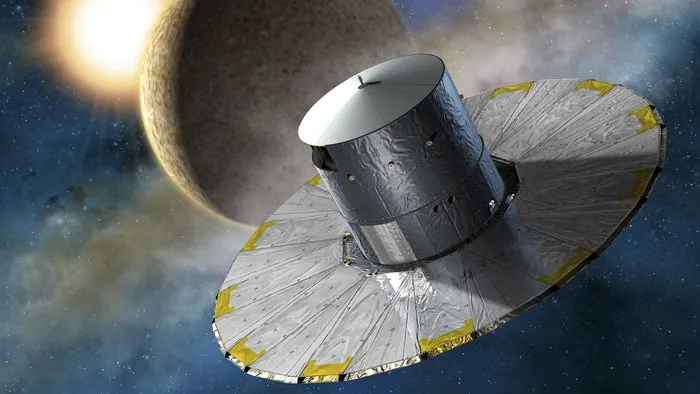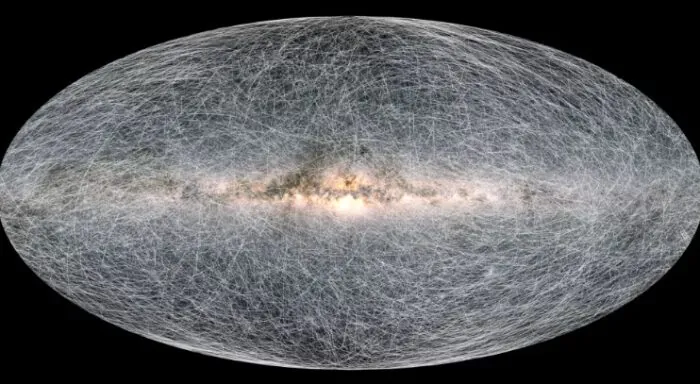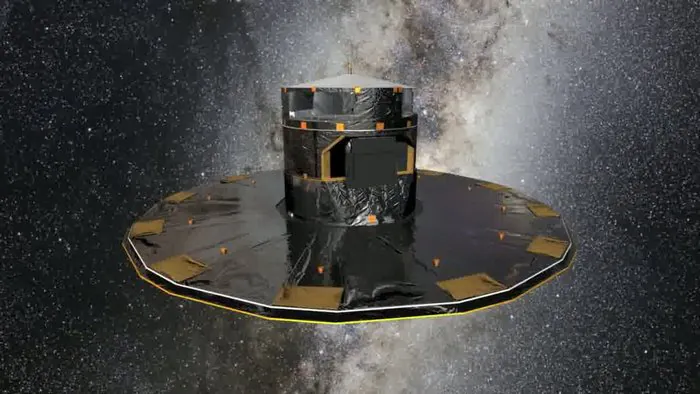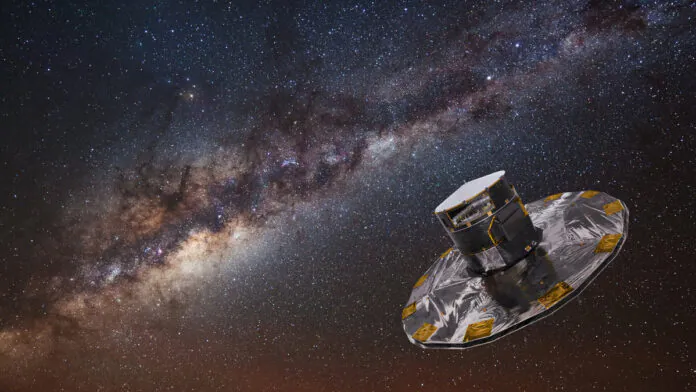© ROOT-NATION.com - Use of content is permitted with a backlink.
The European Space Agency’s (ESA) Gaia mission is not as well known as the Hubble Space Telescope or James Webb. However, so far this mission has published the largest number of scientific papers and has made an unprecedented leap in understanding the history of the galaxy.
Gaia works differently than Webb or Hubble. Instead of observing the universe one fascinating distant object at a time, Gaia scans the sky again and again. The flying saucer telescope, located at Lagrange 2 about 1.5 million km from Earth, observes 2 billion of the brightest stars in the sky, and its image is free from the distorting effects of the Earth’s atmosphere that interfere with terrestrial observations of telescopes. Gaia focuses on several basic parameters: the distance of stars from the Earth, the speed at which stars move in space, and the direction of their movement, as it manifests itself in the sky and in three dimensions.
Because objects in space follow the laws of physics, scientists can model the trajectories of these stars for billions of years into the past and future, revealing the events that shaped the evolution of the galaxy. The discipline, known as galactic archeology, has grown significantly since the launch of Gaia in 2013, and a new release of the data is designed to accelerate research.

These new data contain what astronomers call astrophysical parameters. Astrophysical parameters derived from the observed light spectra of stars show age, mass, brightness levels and, in some cases, the detailed chemical composition of the observed stars.
The group of stars that astronomers “met” thanks to a new release from June 13, consists of half a billion individual objects observed by Gaia. This information will help astronomers clarify the order of events that shaped the Milky Way, and “really untangle its formation history.”

Astronomers believe that the Milky Way began to form about 800 million years after the Big Bang and went through a period of intense formation lasting for 1 to 2 billion years. This period of formation included many collisions with other galaxies, which gradually turned the Milky Way into what we see today: a massive spiral galaxy of 200 billion stars (Gaia sees only about 1% of them).
Also interesting:
- A DAVINCI research mission will be sent to Venus
- NASA’s MAVEN mission gets back to research and operations
In previously published data from Gaia, researchers found traces of those early collisions – waves that still propagate throughout the galaxy, affecting the movement of stars. The most significant of these collisions was the collision with the galaxy Gaia Enceladus. This galaxy was about four times smaller than the Milky Way when they collided about 10 billion years ago. The collision, according to Gaia, created the Milky Way halo, a sphere of finely scattered stars that envelops the galaxy’s much more powerful disk.
The last few billion years have been quiet for the Milky Way. The galaxy gave birth to stars and watched them die at a constant rate, still absorbing the aftershocks from previous shakeups. But in the future everything will be restless again. In fact, astronomers are already observing the approach of the next galactic collision: the collision of two dwarf galaxies in the orbit of the Milky Way – the Large Magellanic Cloud and the Small Magellanic Cloud.

“The Magellanic Clouds entered into orbit around the Milky Way fairly recently, in the past few billion years,” scientists said. “We already see them having an influence on the Milky Way’s gravitational force field, and if we reconstruct the past really well, we might be able to run the whole thing forward and see when the clouds will merge with the Milky Way.”
Despite the turbulent childhood of the Milky Way, the worst event is yet to come: a collision with the Andromeda Galaxy, the nearest large galactic neighbor. Andromeda, which is currently more than 2.5 million light-years from Earth, is one of the celestial objects observed by Gaia. A new release of the data will give a new idea of a collision that will shake two galaxies in about 4.5 billion years.
The sun will be nearing the end of its life when its mother galaxy collides with Andromeda, so humanity is unlikely to witness a galactic collision. The earth will probably be deserted for a long time, scorched by the increasingly hot sun.
You can also help Ukraine fight with Russian occupants via Savelife or via an official page of the National Bank of Ukraine.
Read also:
- NASA: A tiny space rock collided with the James Webb Telescope
- A strange type of radio burst was discovered 3 billion light years from Earth


